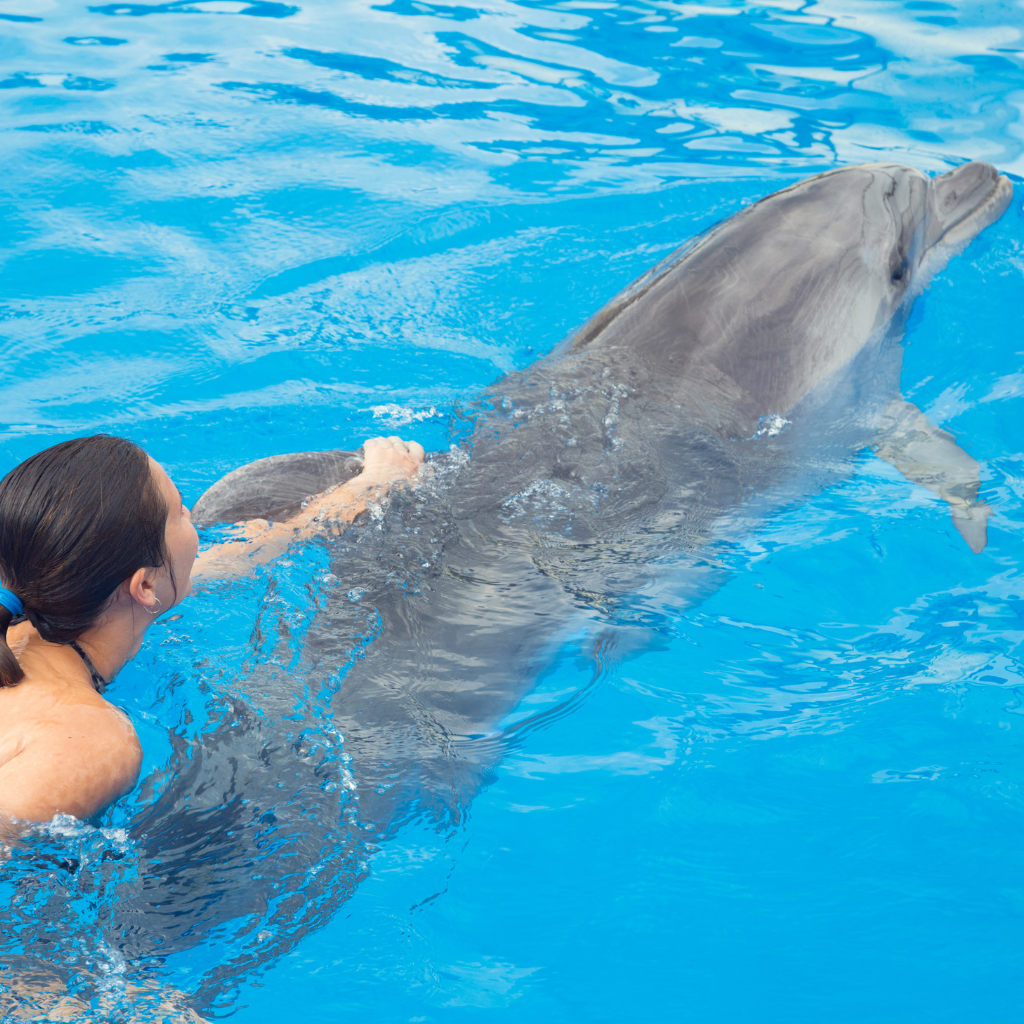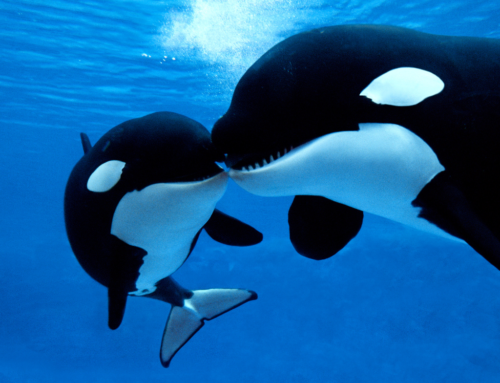
With summer here, travelers will be headed to the beach, cruises, and tropical locations around the world looking for fun. It’s not uncommon to see advertisements for bottlenose dolphin swims with the smiling faces of both the participants and the dolphins themselves. However, these destinations hide a lot from the public who are intrigued about swimming with dolphins.
Table of Contents
The problems with swimming with dolphins in captivity
Wild dolphins are highly intelligent creatures that swim up to 40 miles (64 km) a day while interacting with others, their environment, and diving in deeper waters. It is not possible for dolphins in captivity to have the amount of space required to exhibit their natural behaviour. In addition, concrete sides of pools inhibit a dolphin’s ability to echolocate. Without this ability, they cannot effectively communicate and quickly become disoriented. In order to make the pools safe for tourists to swim, chlorine and other pool chemicals are added to kill bacteria and parasites. While this is perfectly safe in our public pools, their use around dolphins cause chemical burns and even blindness over time. It is entirely unethical to participate in captive dolphin swims, and many argue it is unethical to house dolphins in a captive environment entirely. But, what about swimming with wild dolphins in their natural environment?
Can I swim with wild dolphins?
The issue with swimming with dolphins in the wild is less black and white. Wild dolphins do not lack space, have limited social opportunities, or have constant exposure to pool chemicals. However, there is evidence that shows swimming with wild dolphins causes conservation and environmental problems long-term. Boats looking for dolphins can separate a pod of dolphins, even calves from their mothers. This has resulted in the death of calves and the injury to other dolphins from boat propellers while searching for their missing babies and pod members. The noise from boats also interrupts a dolphin’s feeding patterns, breeding, sleep, and nursing time. Multiple studies have shown that dolphins in areas with more tourists spend far less time doing these essential activities, resulting in lower birth rates, higher rates of stress and illness, higher mortality rates, and even lower body weights from overactivity and less time feeding.
However, after speaking with Cindy Elliser, a marine mammal researcher with PacMam, we agreed that swimming with wild dolphins is not entirely unethical as long as all of the other rules have been followed. When in the water, it’s important to follow these rules:
- Do not chase dolphin pods; boat parallel to them
- Never feed dolphins
- If fishing, pull in all bait and gear if approached by dolphins
- Turn off your boat motor if you are within 100 yards (91 meters) of a dolphin
- Do not touch dolphins, even if they swim up to you
If you are in the water and approached by dolphins, or hop in the water when dolphins are around your boat, you are technically following these rules. Some areas have extremely strict laws involving dolphins and other marine life, so always double check before going out on a boat where they may be.
Dolphins are extremely dangerous

Before you decide to swim with a wild dolphin, it’s important to remember how dangerous they can be. Don’t let their smiles fool you! Dolphins are apex predators like lions, tigers, and bears (oh my!). You wouldn’t throw yourself in the environment of one of these wild creatures would you? There are multiple reports from all over the world of adults, children, and dogs being attacked and even killed by being in the water with dolphins.
It’s also important to remember that dolphins are wild animals, even if they are captive or in dolphin shows. It takes hundreds to thousands of years to actually domesticate an animal species. Training is not the same, and leaves us with our guards down around the animal. Dolphins have shown severe tank aggression when in captivity, attacking their caretakers and swimmers.

Should we swim with dolphins?
Overall, it is my personal opinion that tourists should not be in the water with any species of dolphin. Unless you are adept at reading dolphin body language, it is best to watch these beautiful animals in their natural habitat from the safety of shore or your boat. I completely understand why so many tourists want to experience these amazing creatures up close. However, the captive dolphin industry is worth hundreds of millions of dollars and are very skilled at convincing tourists that dolphin swims are a safe, fun, and ethical activity to participate in on their vacation.
You can listen to my podcast episode with Dr. Cindy Elliser on this subject here to learn more!









Leave a Reply